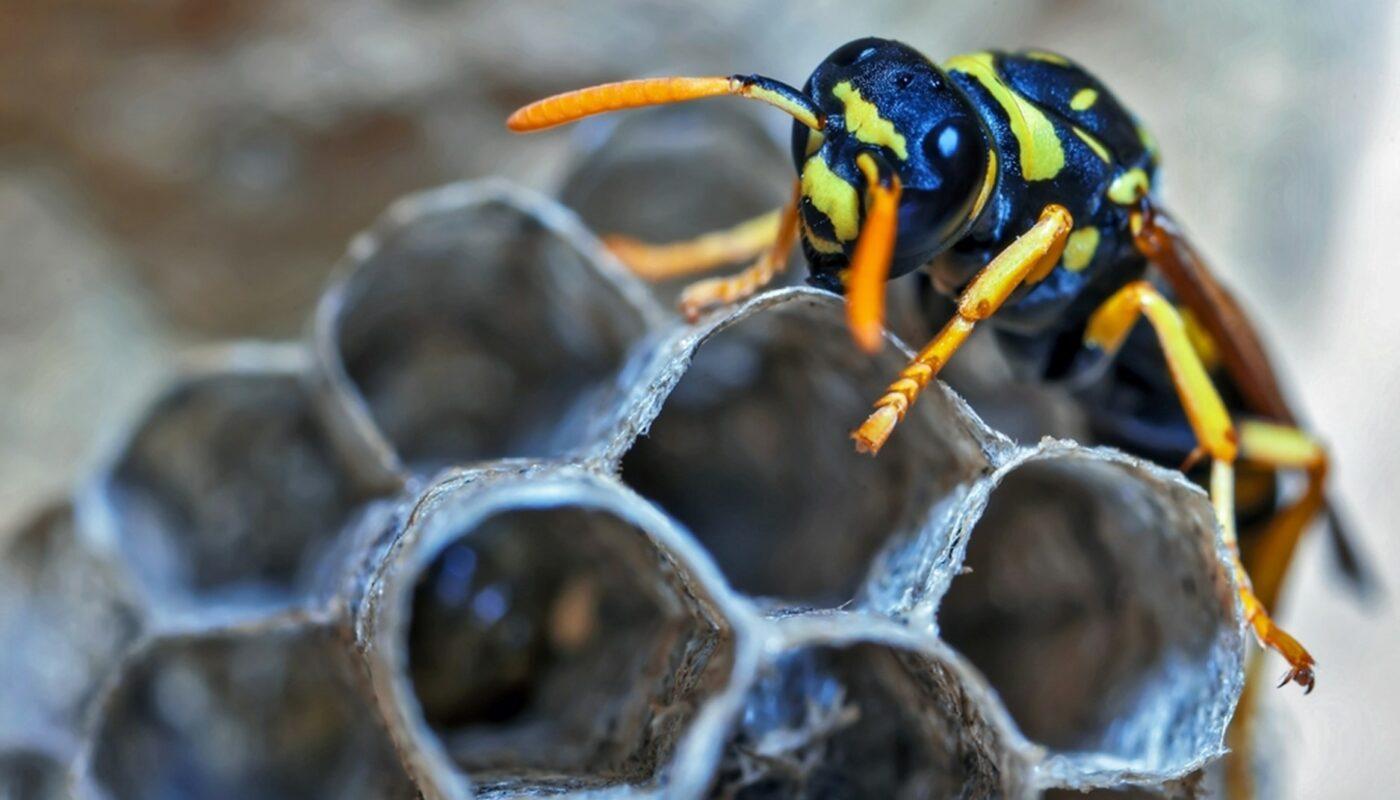The idea of coming across a wasp nest in your day-to-day life, in a space of comfort such as your own garden, is a terrifying prospect that would be enough to send a shudder down the spine of even the hardiest of homeowners. Much like bees, wasps will sting in defence of their nest. Whilst their stings can be painful, they are unlikely to result in serious complications except in the case of an allergic reaction or excessive stings.

Despite their reputation, certain species of wasps can also have positive impacts on the local ecosystem and on biodiversity. Not only do they serve as a natural predator to other species of pest insects, but they also assist in the pollination of flowers.
However, there are other ways in which the wasp’s reputation has been earned. When threatened (particularly when humans stray too close to their nests), wasps will not hesitate to sting and to sting multiple times. In these cases, when a wasp nest has formed near your own property, the best option for you and your family might be to investigate effective wasp nest control.
Identifying the problem
Once again, the main concern surrounding wasps is their presence within places also occupied by humans. When they are territorial, specifically when they are defending a nearby nest, wasps are likely to sting and even at times attack in swarms.
Depending on species, wasps can range from a quarter of an inch to one inch long. They have six legs, four wings and range in colour depending on species, though they are commonly black and yellow. The most common type of problem wasp in Australia is the European wasp, which is about half an inch in length.
The nest of the European wasp has the appearance of a hardened mass, with a paper-mache appearance. These nests are most often found in concealed areas such as the inside of walls, in holes in the ground, within undisturbed rubbish heaps and have even been found inside of toilets!
If there is a presence of wasps and you suspect a nearby nest, an effective way of locating it is to place food out in the open. Upon locating it, the wasp will fly directly in a straight line back to its nest.
What not to do
Do not aggravate a wasp by swinging your arms or trying to swat at it as this is likely to make the wasp aggressive and more likely to sting. To mitigate the risk of attracting wasps, do not leave out unattended food or food scraps and ensure that rubbish and compost is always covered.
If you are stung while near a nest, it is important to not panic or resort to sudden movement. Instead, remain calm and move slowly out of the vicinity of the wasp nest. Wasps release a pheromone upon stinging, attracting other wasps towards you to continue stinging and defend their nest. Therefore, following an initial sting, it is extremely important to remove yourself from the location of the nest.
What you should do
The best way to get rid of wasps is with chemical pesticides which are available over the counter from hardware stores. If at night, be aware that a torch may attract the wasps – instead, use a light with a red filter (or even create your own simply with some red cellophane). The use of protective clothing including a bee veil is highly recommended.
Ensure that the area is free from any pets or children and that, once treated, the area is not interacted with for at least twenty-four hours. Do not spray near any open water or on plants. Afterwards, ensure that you dispose of the dead wasps properly as they can be harmful to pets.
Otherwise, simply call in professionals to deal with the problem for a safe and hassle-free option!
Myths about wasps
It is a myth that a wasp’s sting is more dangerous than that of a bee. A wasp nest will often be more concealed than that of a bee, which can give the impression that wasps attack more and attack unprovoked. In truth, both bees and wasps will attack to defend their nest.
Whilst it is true that removing a wasp’s nest at night is a generally safer option, it is not entirely foolproof or safe. The wasps are less active at night, yet they will still fly out of the nest and sting you if disturbed whilst the nest is being moved.
Wasps are not attracted to sweet foods exclusively. Many species of wasp indeed actually hunt other small insects for most of the year.
~
It is important to remember that all wasp species are not pests, but the European wasp is certainly an invasive species. Remember, wasps are only harmful when they or their nests are being disturbed, and their stings are unlikely to have lasting detrimental effects. However, when wasps begin to impose on your life (regardless of species), it is important to take proactive steps to eliminate the nest, preferably with the assistance of a professional.





